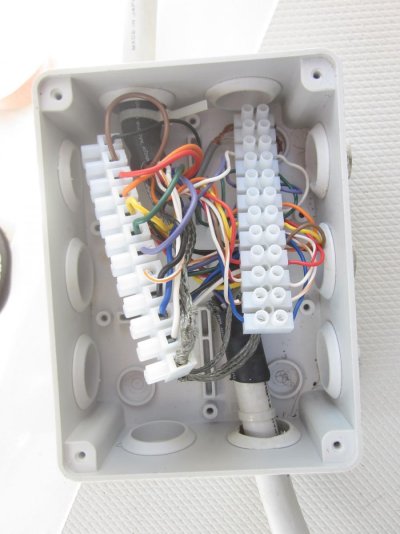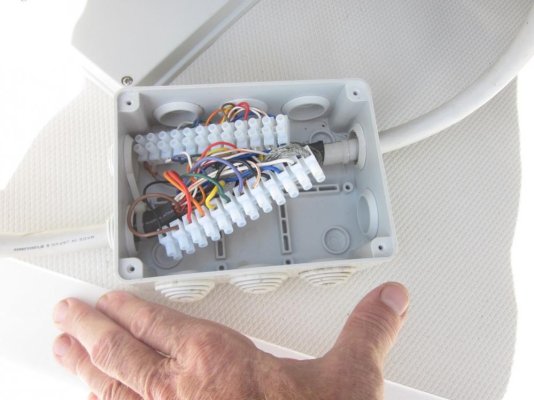Nomad Willy
Guru
The OP mentioned crimp connectors so I assume the wire isn't smaller than what would be appropriate for the smallest crimp connector that as far as I know is the red colored crimps.
I would use them. But not solder. In my ultralight flying days I started out using soldered connected wires thinking I was doing a good job only to find out that vibration would break the wire right at the end of the solder. Engineers would probably call that point a stress riser. The wire would break just like you were trying to break a wire by bending it back and forth. The more vibration the more soldered wires break this way. The crimp connectors don't seem to do that.
On my radar arch I crimped all the connectors minimizing their number and sealed them w 5200 or similar. Lasted 8 years at least. I think it helps to feather out the sealer so the bending part of the wire is as long as practical. If you don't like the globed on look of the sealer shrink wrapping is a positive move.
As for splicing a coaxial cable it is easily done if you know what you're doing as I did when I was an electronics technician in the Navy. That was in the 60s. Now I'd get a new cable.
I would use them. But not solder. In my ultralight flying days I started out using soldered connected wires thinking I was doing a good job only to find out that vibration would break the wire right at the end of the solder. Engineers would probably call that point a stress riser. The wire would break just like you were trying to break a wire by bending it back and forth. The more vibration the more soldered wires break this way. The crimp connectors don't seem to do that.
On my radar arch I crimped all the connectors minimizing their number and sealed them w 5200 or similar. Lasted 8 years at least. I think it helps to feather out the sealer so the bending part of the wire is as long as practical. If you don't like the globed on look of the sealer shrink wrapping is a positive move.
As for splicing a coaxial cable it is easily done if you know what you're doing as I did when I was an electronics technician in the Navy. That was in the 60s. Now I'd get a new cable.
Last edited:





